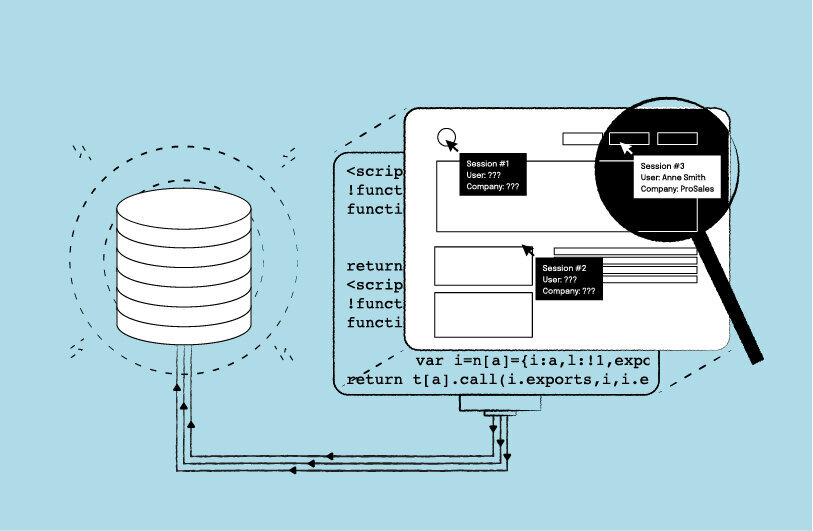Data Scientist shares his thoughts on Dreamdata’s Data Platform
Dreamdata’s data platform continues to surprise data teams across our customer base. With data from right across the commercial tech stack, cleaned and merged into accounts, these teams finally gain a reliable source of truth, and much-needed time to focus on business needs.
To shed more light on the potential of Dreamdata’s data platform, we sat down with our very own Lead Data Scientist, Mikkel Settnes, to take a look behind the scenes.
“So instead of wrangling data, our customers can focus on applying the data to create value for their specific business case.”
Q1: Where does Dreamdata’s data platform fall within the wider data tool landscape?
Mikkel: “If we take a look at Scott Brinker’s recent Open Data Ecosystem landscape graphic as a reference guide, I would say that Dreamdata sits between the DataOps and Consumption layers.
This is because Dreamdata’s data platform is doing a number of these functions in one.
On one level, we have clear similarities with CDPs like Segment, in particular when it comes to tracking. But we also integrate directly with CDPs for our behind-the-scenes cleaning, transforming and modelling - using Dataform. And, our data platform also delivers orchestration and quality control ‘out-of-the-box’ without explicit need to add, use and understand additional tools.
But then there’s an additional, and important, point of difference. All the tools in the Open Data Ecosystem are ‘general’, meaning they can be used across many industries. However, you have to do a lot of work in these tools before you reach the Consumption layer where your data sits in a BI tool (or similar) and is ready to make a difference.
Dreamdata’s data platform doesn’t function in this general way. Instead of focusing on a task, say quality, it focuses on a specific type of data and the goal of its use: B2B companies that want to do revenue attribution and behavioural modelling and analytics.
In this way, because it collects, joins, cleans and transforms data from all places of interest for a B2B company, i.e. website, CRM, Marketing Automation, Ad platforms, Customer Success tool etc., Dreamdata spans the subcategories Pipeline, Modelling, Orchestration and Quality. To produce the outcome of ordered datasets at the account level for different funnel stages. So instead of wrangling data, our customers can focus on applying the data to create value for their specific business case.”
Q2: Which teams stand to benefit most from Dreamdata’s data platform?
Mikkel: “Dealing in the currency of data tracking and transformation, it’s data teams that will naturally have the greatest interest, and most to gain, from the platform.
But the benefits are most definitely not exclusive to data teams. From our present customer base we see titles containing ‘Data Scientist’, ‘Analyst’, ‘BI’, ‘RevOps’ and ‘GrowthOps’. A group of profiles that share in common the desire to run analytics on revenue and activity data collected from many different systems and who feel at home with simple SQL queries.
Typically, it’s the people who already have a way of delivering insights to their organisation, i.e. the tools sitting within the dashboarding and reporting tools box in the landscape overview [see infographic ☝️].
Dreamdata, of course, provides our own visualisation and reporting, but we understand the need to answer very business-specific questions, run an ad-hoc analysis or the desire to present customised insights within the BI/reporting tool that the organisation is already using.”
Check out our intro to Data Platform video —>
And learn more about Dreamdata’s Revenue Analytics here —>
Q3: What are the main problems Dreamdata’s data platform helps solve?
Mikkel: “Dreamdata solves the problem of building out your own (tracking), transformation, modelling, and orchestration stack.
To make your B2B data useful you need to collect data from a lot of different sources like your website, CRM, Marketing Automation, Ad platforms, Customer Success tool etc. A lot of work then needs to be done to join, clean and transform all these different data sources into a unified view of your customer accounts and all their touchpoints along the different funnel stages.
Spoiler: As you probably suspected, all these sources do not ‘fit together’ to create data on account level suitable for behavioural analytics and attribution analysis for B2B companies.
This is where Dreamdata’s data platform enters by providing those cleaned and collected datasets suited for the analytics needs of a B2B company.
Dreamdata offers a shortcut for B2B companies to obtain cleaned, joined and transformed data with the ability to customize mappings, attribution models etc. without doing all the data extraction, wrangling and scheduling yourself.
What this means above all else, is that with Dreamdata, the analyst can use their time applying the data to business decisions. And with the customisation, the analyst can focus very specifically on the business’s unique needs, rather than the more general setup of putting everything together without making mistakes.
In fact, I feel the question of time and focus is a really important one. There’s no doubt part of our current customers could do this themselves. That is, learn how to use and apply the different generic tools and implement transformations, modelling and orchestration. But it will take a considerable amount of time and effort, while the company will not see value until the data sits cleaned and joined in your data warehouse ready to be used for actionable insight. This is the step Dreamdata will fast forward you to.
“This is equally true of maintenance. Dreamdata’s data platform solves the maintenance problem. The analyst is able to avoid spending time on broken APIs and failing transformations.”
Another often overlooked point: joining and cleaning data can sometimes be a kind of ‘trial-and-error’ process where you first discover discrepancies as you start to use the data. With Dreamdata you take advantage of the ‘mistakes’ of other people. So you do not have to reinvent the wheel everywhere, because the devil is often in small time-consuming details.
Finally, it’s also worth mentioning that these problems are always more acute in smaller teams, in particular those that don’t have access to dedicated data engineers or similar roles. And who therefore struggle to build out stable infrastructure. In these cases, Dreamdata’s data platform becomes all the more valuable.”
You might also be interested in this post looking at what it takes to build a tool like Dreamdata.
Q4: What other platforms might you look to in order to solve the same problems?
Mikkel: “Most other attribution platforms don’t make their data available, and on the odd occasion that they do, it’s at a significant price.
CDP’s seem to move in this direction, but they do so with a B2C focus where there is no concept of an account and funnels are simpler. So I have a hard time seeing that being a one-stop-shop for B2B analytics any time soon.
Some observers of the tech landscape might incorrectly place us within the CDP segment. But, as I mentioned in my response to your first question, Dreamdata, while having similarities, is not a CDP. The extent to which we organise the data is a case in point. Especially, in the B2B use case, where users need the data tracked and joined to accounts in your CRM, Dreamdata provides a view you don’t get in the more all-purpose tools.
Otherwise, it’s a case of achieving these solutions through a do-it-yourself project. In essence, this option would require you to combine the relevant tools yourself and then implement the transformation and orchestration.
This takes us back to the ‘opportunity cost’ that is so important - what could you have been doing instead of wrangling data sources?”







